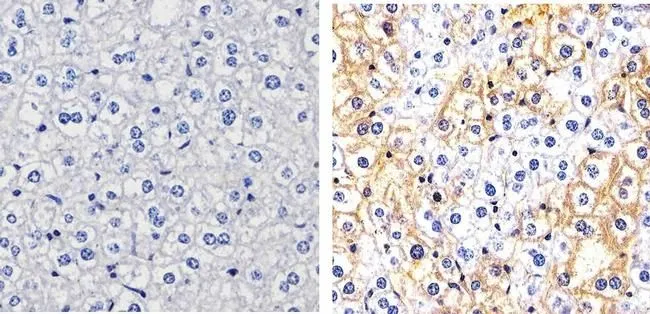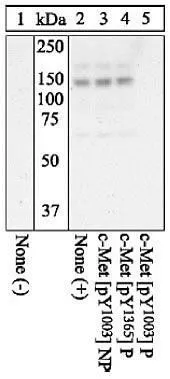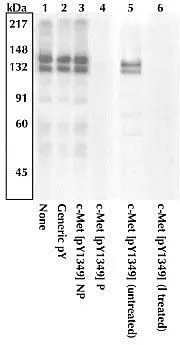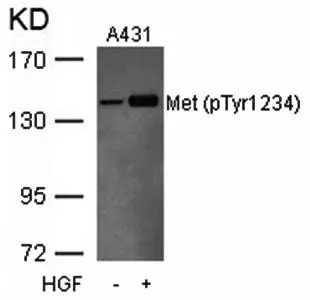
IHC-P analysis of mouse liver tissue using GTX25656 c-Met (phospho Tyr1003) antibody. Right : Primary antibody Left : Negative control without primary antibody Antigen retrieval : 10mM sodium citrate (pH 6.0), microwaved for 8-15 min Dilution : 1:100
c-Met (phospho Tyr1003) antibody
GTX25656
ApplicationsWestern Blot, ImmunoHistoChemistry, ImmunoHistoChemistry Paraffin
Product group Antibodies
TargetMET
Overview
- SupplierGeneTex
- Product Namec-Met (phospho Tyr1003) antibody - Orthogonal Validated
- Delivery Days Customer9
- Application Supplier NoteIHC-P: 1:20-1:200. *Optimal dilutions/concentrations should be determined by the researcher.Not tested in other applications.
- ApplicationsWestern Blot, ImmunoHistoChemistry, ImmunoHistoChemistry Paraffin
- CertificationResearch Use Only
- ClonalityPolyclonal
- ConjugateUnconjugated
- Gene ID4233
- Target nameMET
- Target descriptionMET proto-oncogene, receptor tyrosine kinase
- Target synonymsAUTS9, DA11, DFNB97, HGFR, RCCP2, c-Met, hepatocyte growth factor receptor, HGF receptor, HGF/SF receptor, SF receptor, proto-oncogene c-Met, scatter factor receptor, tyrosine-protein kinase Met
- HostRabbit
- IsotypeIgG
- Protein IDP08581
- Protein NameHepatocyte growth factor receptor
- Scientific DescriptionThis gene encodes a member of the receptor tyrosine kinase family of proteins and the product of the proto-oncogene MET. The encoded preproprotein is proteolytically processed to generate alpha and beta subunits that are linked via disulfide bonds to form the mature receptor. Further processing of the beta subunit results in the formation of the M10 peptide, which has been shown to reduce lung fibrosis. Binding of its ligand, hepatocyte growth factor, induces dimerization and activation of the receptor, which plays a role in cellular survival, embryogenesis, and cellular migration and invasion. Mutations in this gene are associated with papillary renal cell carcinoma, hepatocellular carcinoma, and various head and neck cancers. Amplification and overexpression of this gene are also associated with multiple human cancers. [provided by RefSeq, May 2016]
- Storage Instruction-20°C or -80°C,2°C to 8°C
- UNSPSC12352203





![WB analysis of various samples using GTX14700 c-Met antibody [3i20(25H2)]. Lane 1 : mIMCD3 Lane 2 : Vero Lane 3 : 293 (HGF stimulated) Lane 4 : 293 (starved) Lane 5 : C6](https://www.genetex.com/upload/website/prouct_img/normal/GTX14700/GTX14700_20191203_WB_46_w_23060620_293.webp)

